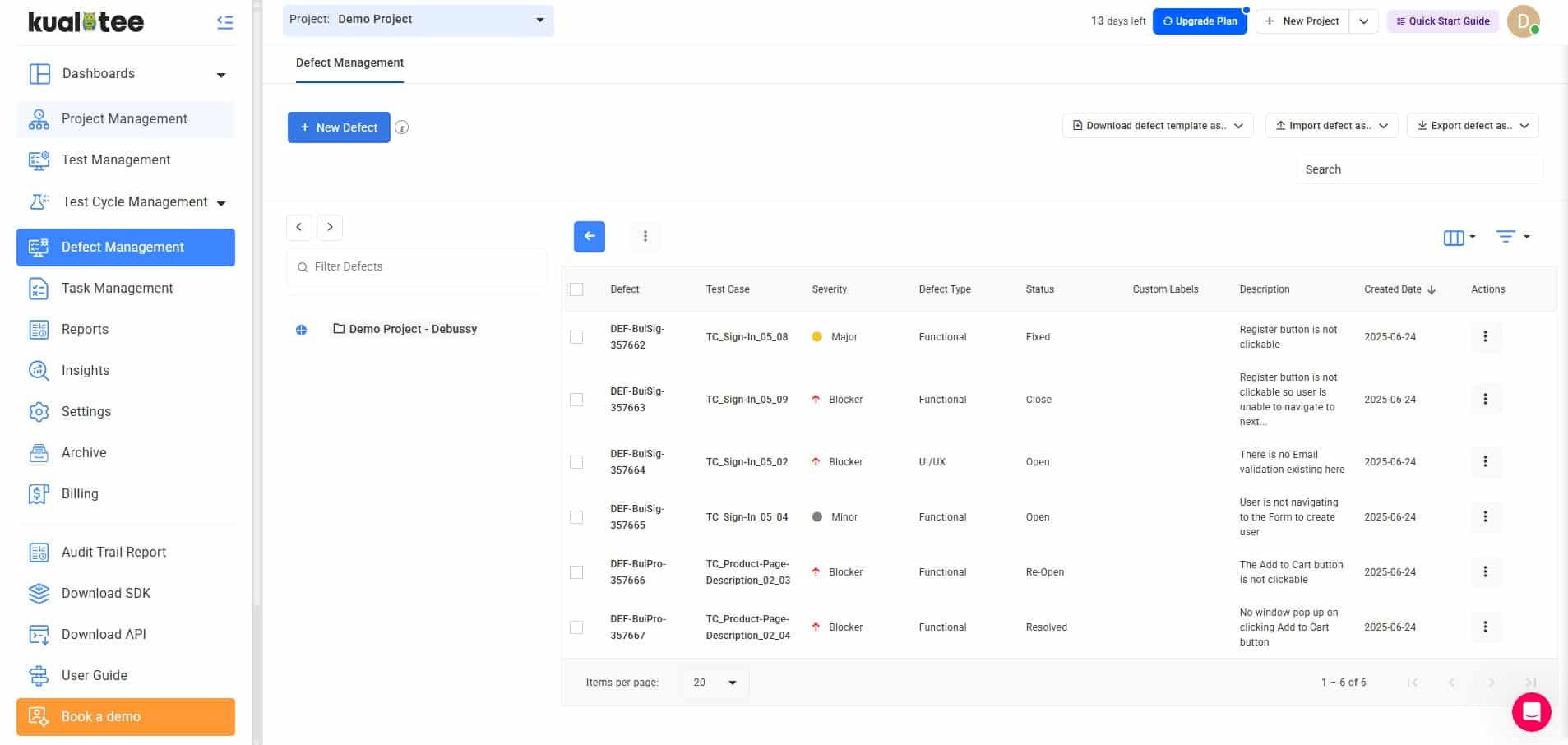Software testers have to log defects that they can across in an application. These defects have to be stored somewhere where they are easily accessible. So, they can be tracked and fixed.
Traditionally, this is done using a spreadsheet. But the thing is that spreadsheets aren’t convenient. You have to find defects manually in them. And God help you if the sheet is already filled with previous defects.
Enter defect management tools. They are a great solution for changing chaotic bug tracking into a well-oiled process.
These tools offer so many benefits that you’re going to appreciate as a tester. Today, we’re going to explore 7 of the most prominent reasons why every tester should make defect management tools a part of their arsenal.
What is a Defect Management Tool?
A defect management tool is a specialized software that is designed to help QA teams when it comes to defects. It allows them to identify, document, track, prioritize, and resolve defects throughout the software development lifecycle.
The tool centralizes all the defect data. Communication between teams is also streamlined by it, which ensures that no issue goes unresolved.
Kualitee is an example of a robust test and defect management tool. It offers various features and smoothens processes for teams. Here’s what its defect dashboard looks like:

Why Use a Defect Management Tool?
The following are 7 reasons why QA teams should make use of a high-end defect management tool.
1. To Deliver Better-Quality Software Applications
Here’s the most noticeable benefit of using a defect management tool: its ability to deliver better software.
These tools help catch defects that might get overlooked. They provide automated detection and can identify even hidden or hard-to-reproduce bugs. Only thoroughly tested, reliable products reach the end customers.
Furthermore, once a defect is logged in the tool, it is tracked until resolution. There is hardly any room for mistakes.
So, by systematically tracking and managing bugs, you’re reducing the risk of releasing faulty software. In turn, this increases the chances of user satisfaction and good reviews.
2. To Enable Timely Error Detection and Faster Releases
It’s no secret that the earlier a defect is detected, the easier it is to fix. A defect management tool helps you do just that.
Most of them provide real-time tracking and notifications. They have dashboards where everything important is shown. This allows teams to identify and address issues quickly.
The cherry on top is that such tools also automate several processes. Manual effort is reduced, and faster development cycles are achieved. You’ll notice a decrease in the time-to-market for new features or products.
3. To reduce Development and Maintenance Costs
It is highly discouraged that bugs be fixed late in the development cycle. Or worse, after release. This is because then, they’ll be very costly.
By catching defects early and smoothing the resolution process, defect management tools are actually saving you money. And time as well.
This cost-effectiveness is further amplified when the bug fixes are automated. Last-minute labour isn’t needed at all. The teams can focus on other high-priority fixes in the meantime.
4. To Gain Insights into Bug Trends and Continuous Improvement
With defect management tools, QA teams get detailed reports and analytics that can be generated at any moment. Recurring issues, root causes, and trends can be easily identified over time.
This data-driven approach supports continuous improvement. The development processes are refined, and similar defects are prevented in the future.
Additionally, teams can also alter their testing strategies, considering the insights provided by a defect management tool.
5. To Enhance Team Collaboration and Time Management
Software development is all about collective effort. Developers aren’t the only ones responsible for it. Testers, product managers, and decision-makers all have to work together.
Defect management tools provide a centralized platform for them. They can use it for communication. As well as task assignment and progress tracking. What this does is it enables better teamwork and allows everyone to stay on the same page. The priorities and deadlines are all aligned.
So, basically, teams get all defect-related discussions and updates in one place. No one is left out.
6. To Improve Customer Retention
Customer retention is directly tied to product quality. You provide customers with software applications that work smoothly, without bugs. And they’ll stay loyal.
Conversely, if users encounter bugs or performance issues, they’re unlikely to return. By leveraging a defect management tool, this can be avoided. And that’s because QA teams can use it to track and resolve defects, ensuring that the software is reliable.
The bug tracking and resolution features will reduce user frustration, and opportunities for growth will open.
7. To Protect and Enhance Brand Reputation
Releasing a product with defects can damage an organization’s reputation. Even if the defects are minor ones. Customers today have high expectations for digital experiences. They want perfection.
Thankfully, a defect management tool, like Kualitee, enables testers to hash out all the defects. So, only polished versions of software applications are pushed live. This helps organizations stay ahead of competitors and build credibility in the market.
Best Practices for Maximizing the Value of Your Defect Management Tool
Before we wrap up, we’d like to mention some of the best practices that can enable testers to maximize results from their defect management tool. They are:
- Combine test management and QA systems for a smooth workflow. And if you don’t want to use multiple tools for different purposes, you’ve got Kualitee. It offers an all-in-one solution.
- Customize workflows so they match your QA team’s unique processes.
- Keep an eye out for notifications and reports to stay on top of things.
- Regularly review analytics to drive continuous improvement.
- Train your QA team to use the tool effectively. This’ll help get maximum ROI.
Summing Up
Defect management tools, like Kualitee, play an important role in the workflow of QA teams. They help improve software quality and make the defect tracking process smooth.
By centralizing defect data and providing real-time error detection. Along with fostering collaboration, these tools not only reduce development costs but also improve customer retention.
Furthermore, they protect brand reputation and offer insights on defect trends. This, in turn, translates to continuous improvement with effective testing strategies. Better software releases are achieved, satisfying users.
















































